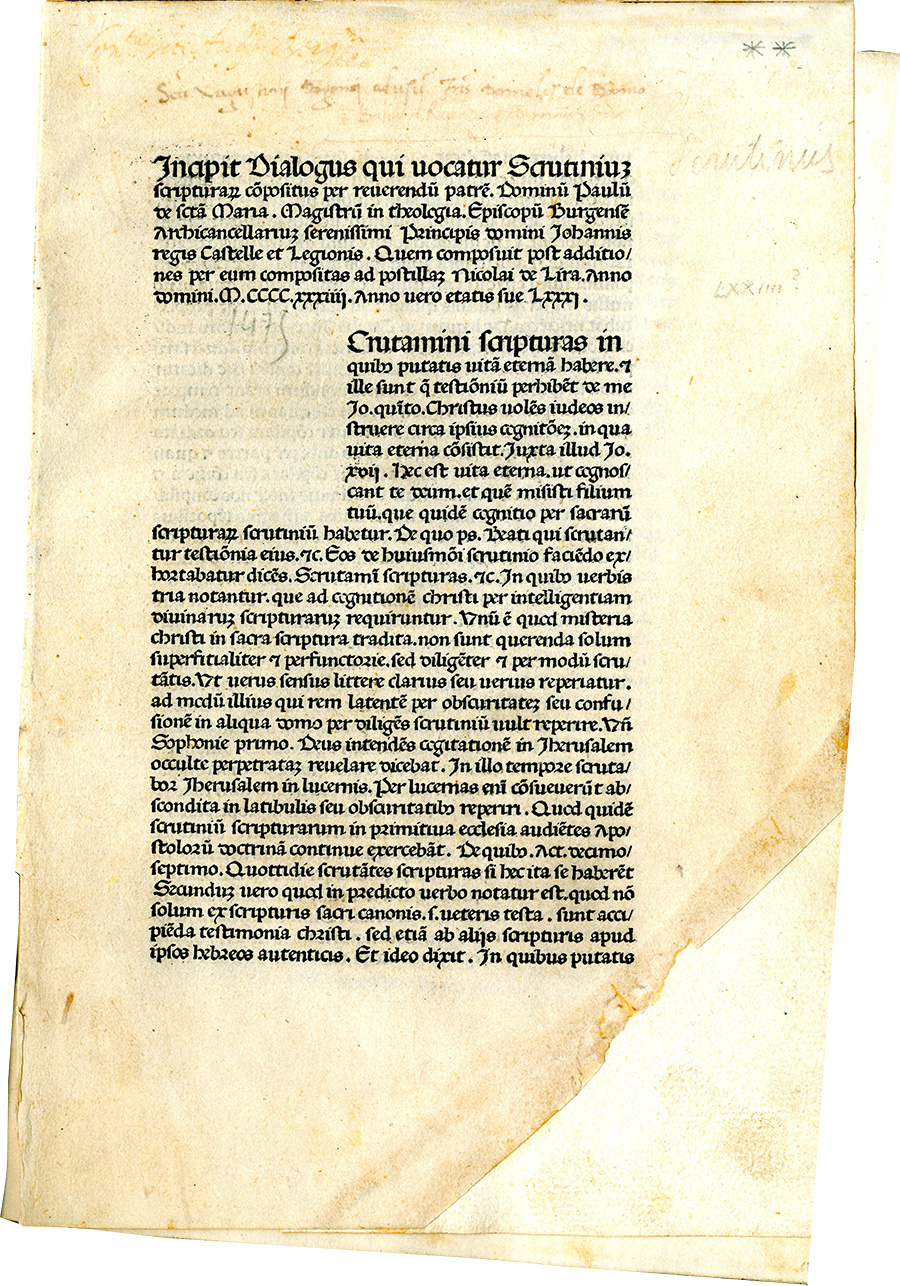Pablo de Santa María (or Shlomo Halevi by his prior name) is regarded as one of the most radical and astonishing examples of Jewish conversion to Christianity in the Middle Ages. The conversion of this celebrated Rabbi from Burgos, who joined the Christian clergy and became the bishop of his own home town, captures in many ways the sudden breakdown and mass conversions of Iberian Jewry that followed the riots of 1391. In the early 1430s, already as a bishop he wrote a twofold dialogue between a Christian and a Jew and between a magister and his recently converted disciple - The Scrutinium scripturarum (Scrutiny of the Scriptures) - in which he presented the theological path that leads from Judaism to Christianity. The Scrutinium provided its readers not only with a scholarly Latin account of the Christian and the Jewish polemical strategies of that crucial time, but also with a bold attempt to use rabbinical literature and Hebrew scholarship as legitimate means for crystallizing Christian truths and with a defense of the spiritual and carnal Israelite origins of Jewish converts to Christianity. Thus, while it was following the guidelines of a catechesis or a missionary handbook, it eventually turned into a best seller mostly because of its contribution to the awaking interest in Hebraic studies in the late 15th century. It was therefore printed during the 1470s in six different editions, including this 1475 Mantua edition by Johannes Schallus. In this sense, the Scrutinium serves as an example to the long-term cultural and intellectual impact that the mass conversions in the Iberian Peninsula and its products had on the Christian world well beyond the Spanish kingdoms.
Which exhibit?
Page: Featured item
Short name for this entry
Pablo de Santa María
Order on exhibit page
5
Turn off the details link on the exhibit page
Off
